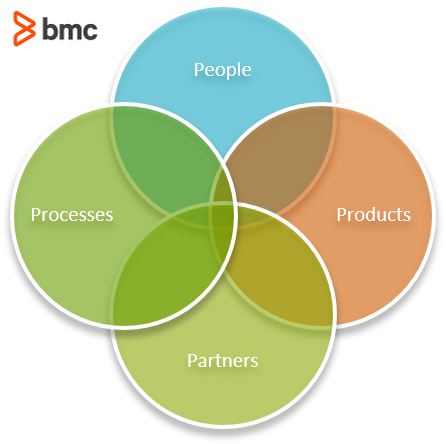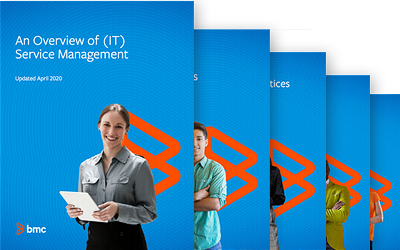Which Of The Following Benefits Is Not Primarily The Result Of Good Service Design
Be information technology smart devices, electric vehicles, or mobile apps, appeal for today's products and services has a lot to do with look and feel, in as much every bit functionality is the essential reason for their creation. Each unveiling of a production concept or launch is now met with social media critics looking at all dimensions:
- What'southward under the hood
- What the were designers thinking
- Whether it'due south worth buying
- How it compares with competitor products
- And so on…
Examples of poor production blueprint are plentiful, and the danger of a company going nether from its effects is existent. CX/UX has become a critical ingredient that is unmissable in ensuring products and services deliver desired value by non only because functionality from a technical perspective, merely also a humanely one.
When it comes to product and service design, it is crucial that all stakeholders involved understand that we are not merely looking at the solution itself only also everything else that will manage the quality of the service in a way that meets the needs of the customers and the service provider. Modern approaches such as design thinking and man centered design have empathy at their core, resulting in production and service blueprints that have gone through several iterations, exploring multiple possibilities in club to create the best possible outcomes for customers.
Service Blueprint Package
The service pattern package (SDP) is a concept introduced in ITIL® v3 that refers to documentation defining all aspects of an IT service and its requirements through each stage of its lifecycle.
The aim of the SDP is to ensure all aspects of the service have been considered and documented. And its purpose is to provide a clear argument of 'what good looks like' to designers and similar consumers.
(Explore our multi-part ITIL v3 Guide .)
Because active approaches to product blueprint are mainstream these days, the SDP is no longer a standard rigid suite of many documents that cannot incorporate change one time development of the service has started. Instead, the SDP is now represented by epics, user stories, product vision, solution architecture, wireframes, and other artefacts that capture evolving consumer sentiments and product team agreement.
The definition of an SDP requires a holistic view, since input from different stakeholders involved in the life of the product or service is critical in ensuring its successful development, deployment, adoption and support. This holistic perspective is what brings us to the concept of the 4 Ps of service design.
The 4 Ps of Service Blueprint
In ITIL v3, we were introduced to the concept of 4 Ps of Service Design—that is:
- People
- Products
- Partners
- Processes

4Ps become 4 Dimensions
Successful service management could just exist achieved through effective and efficient use of four Ps to ensure the resultant products and services have the greatest affect or benefit to the business. With the update to ITIL 4, the iv Ps have been reworked into the iv dimensions of service direction i.e.
- People → Organisation and people
- Products → Information and applied science
- Partners → Partners and suppliers
- Processes → Value streams and processes

Co-ordinate to the ITIL 4 Service Design practice guide, for an SDP to be constructive, it should address all four dimensions of the service and exist focused on customer and user experience. Some of the information to be captured for each dimension in the SDP includes:
- Organizations and people: operating model and support matrix, training needs
- Data and engineering science: tooling, monitoring, information management, and vulnerability
- Partners and suppliers: advisable contracts, service integration, critical success factors
- Value streams and processes: critical path analysis of Information technology service, expedited processes
To ensure that the holistic approach covers non only the pattern, just also the evolution of the production and service, service blueprint orchestration comes into view. This ensures all resource required to accomplish the consequence, including suppliers, data, technology, people, processes, and operating models, are considered when designing and transitioning products and solutions that encounter business and customer needs.
(Learn more in our multi-role ITIL 4 Guide .)
Four Dimensions considerations in Service Pattern
Let'due south look briefly at each service pattern dimension.
Organizations & people
People are central to the successful design of whatever service. A good relationship betwixt a service provider and its customers relies on an empathetic agreement of client needs and feel and translating that into a applied design that can adapt to changes.
Without understanding customer outcomes or the value they want to achieve from the service, there is a huge chance that the designed service will fail to satisfy their needs, resulting in wasted resources and opportunities for the organisation involved. The team involved in designing the service accept to be properly structured, trained, and equipped to ensure that the requirements from the customers are actualized.
Information & technology
In pursuit of the balance between functionality, operation, and cost, choosing the right engineering science cannot be overstated. While the primary driver of product and service designs volition exist the features that come from the customers' requirements, it has to be underpinned by the appropriate environment, infrastructure, applications, interfaces, and information sources that volition make the service work.
And how these are put together like a jigsaw will depend on the pick of architecture that will drive the technology design activities.
Partners & suppliers
3rd political party providers have become essential to today's service delivery landscape particularly in this age of outsourcing, managed services, and cloud computing. A service provider volition usually piece of work with agreed partners and vendors to translate customer requirements into working designs, and the contracts or agreements will ordinarily specify terms, conditions and targets that will support the service levels agreed with the customer.
Whatever the partnership or engagement approach with the vendor, it is essential that a good working human relationship is established as the service provider will struggle to develop quality production designs without the help of a partner who is in tune with the needs of the organization and customers.
Value streams & processes
Service design is captured as one of the cadre steps within the value stream that results in the creation of a new or modified service. Holistic thinking will ensure that all dependencies to the value stream including processes are comprehensively addressed. Processes involved in service design include service design planning and service design coordination. The latter addresses the bodily service design activities including:
- Identifying applicable pattern model
- Planning design activities, resources, and capabilities
- Executing on the blueprint
- Finally, reviewing the service design
Summing up the 4Ps
The design of any product or service must consider all the elements required for the service to be delivered and managed in the way that delivers summit customer experience and volition upshot in value for the coin spent.
Any service provider worth their salt has to be cognizant of the iv dimensions while using an integrated approach to evangelize the desired business outcomes and planned results in a quality and toll-effective manner. And so whether information technology'southward an app, a cloud service or connectivity, a holistic approach that covers all bases is the only manner to design right.
Related reading
- BMC Service Direction Web log
- People, Procedure, Technology (and Partners): An Introduction
- Meridian ITSM Metrics & KPIs: Measuring for Success, Aiming for Improvement
- ITSM vs BRM vs Agile: How Service, Business concern Relationship & Product Direction Piece of work Together
- The Top Service Management (ITSM) Trends Today
- What Is AISM? AI Service Management Explained
ITIL iv Best Practice east-books
These all-new ITIL e-books highlight important elements of ITIL 4 best practices so that you lot tin can quickly empathise central changes and actionable concepts. Download now for free!

These postings are my own and do not necessarily represent BMC'due south position, strategies, or stance.
See an error or accept a proposition? Delight permit us know past emailing blogs@bmc.com.
BMC Brings the A-Game
BMC works with 86% of the Forbes Global fifty and customers and partners effectually the world to create their future. With our history of innovation, industry-leading automation, operations, and service management solutions, combined with unmatched flexibility, we help organizations gratis up time and infinite to become an Autonomous Digital Enterprise that conquers the opportunities ahead.
Learn more than virtually BMC ›
Which Of The Following Benefits Is Not Primarily The Result Of Good Service Design,
Source: https://www.bmc.com/blogs/four-ps-itil-service-design/
Posted by: meyersnobbland.blogspot.com



0 Response to "Which Of The Following Benefits Is Not Primarily The Result Of Good Service Design"
Post a Comment